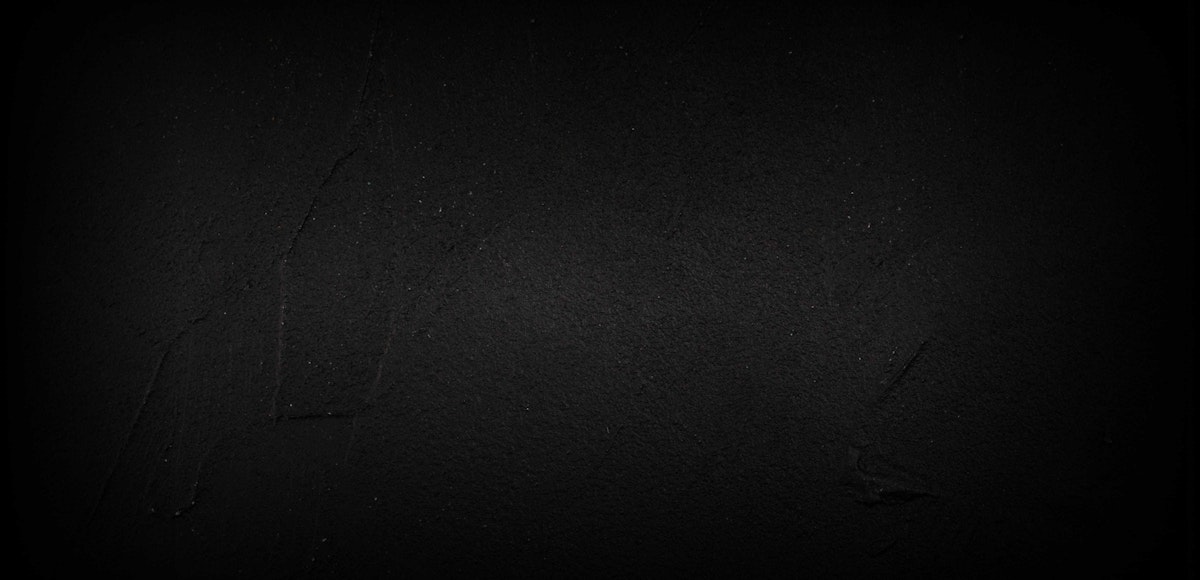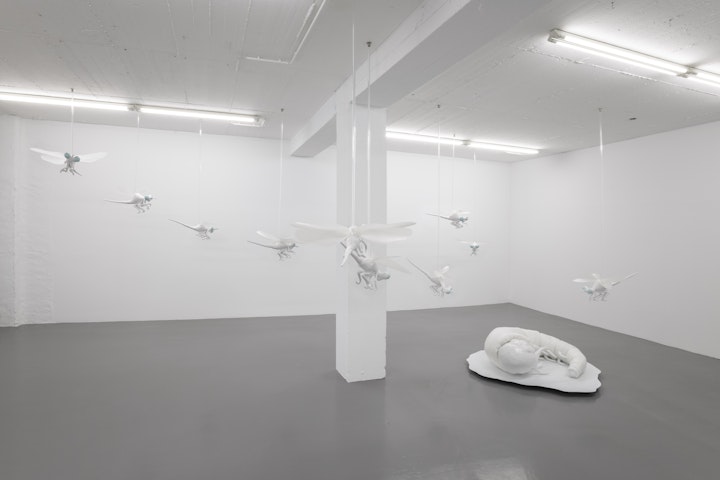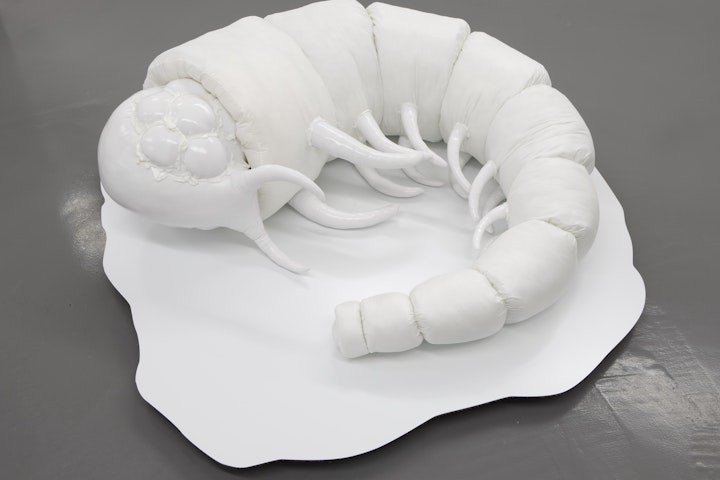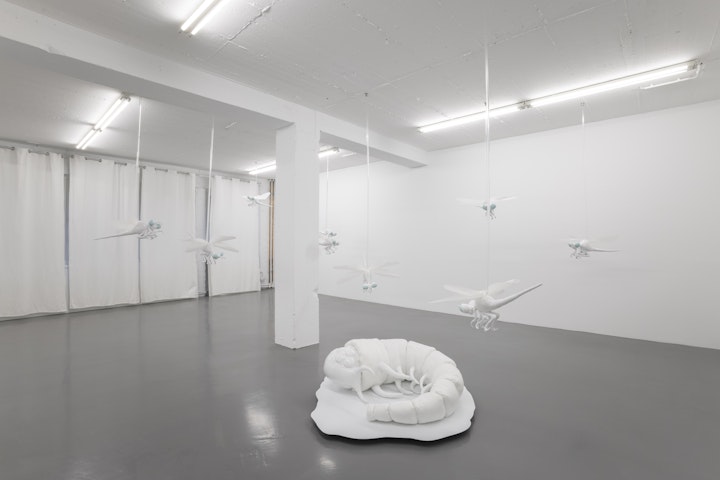
LEAP22 Mary-Audrey Ramirez
Mary-Audrey, your work draws inspiration from both the digital and the physical worlds. Would you say it leans more heavily towards one or the other?
I’m interested in the difference between the digital and the physical realms, in playing with the borders between the two. Note that I don’t say “the real world” and “not the real world” because both worlds are real. I’ve always been inspired by video games. Sometimes, depending on what games you play, there’s a phantom haptic, a phantom taste or smell. There’s a desire to belong to that world while knowing that you can’t. That’s part of what I try to translate into my work.
Also, I’m generally not good at working with existing stuff. If I made a creature sitting on an object, I would have to make that object myself. If I took a random chair and put one of my sculptures on it, someone could go “Oh, my grandma used to have this chair!”, and another might think “I hate this chair, we used to have it in school”. Associations like that take away the magic from the whole piece. I don’t want my work to be tied to a human experience like that. I’d rather have someone see my dragonflies and say “These dragonflies remind me of some creature from some video game” because then there’s still some room for dreaming.
The creatures in sadness reigns, Shrimpboy and the dragonflies, are all white though, far from the flashy, colourful worlds often found in video games.
At one point my work was all over the social media platforms and even used as backdrops for Q&As. I don’t want this to happen again so I looked for a way to prevent it. A platform like Instagram has an AI that scans the shapes in pictures to decide whether they’re worth pushing. The trick is that if I do everything on white, it’s difficult for the AI to scan the images.
It also makes it difficult to photograph the work and even though the photographer did a good job, it looks by far not as magical in pictures as it does in the space. I actually quite like that because it was often the other way around. I hope the magic comes back at Rotondes. (below: sadness reigns at MARTINETZ (Cologne), photos: Tamara Lorenz)
What kind of material did you use? Shrimpboy looks strikingly smooth.
I made the patterns and sewed everything myself in vinyl. When I saw the vinyl fabric, it reminded me of these 3D renderings from back in the days, when 3D software was shitty and the surfaces were mostly shiny and smooth.
The funny thing is that when people see a picture of this shrimp creature on the floor, some ask me if it’s a rendering. And when they see the dragonflies, they ask me if they are 3D-printed. At LEAP I’ll also show a new video of Shrimpboy lying in the snow. I just showed it to a few people on my phone and they didn’t realise it was CGI. I like that people can’t tell what’s real and what’s not. A certain curiosity arises, which, again, allows room for dreaming.
Would you say a competition like LEAP is a necessary step in an artist’s career?
I wouldn’t describe LEAP as a competition, rather as a platform representing and showing new, young contemporary artists. I think most artists don’t like the idea of competing against each other. I’ve done a lot of sports, I know how to train to get to a certain stage. But in an art “competition” there’s no fairness in winning. My main focus is to put on a good exhibition and to make new, different connections. Showing my work in a new environment, alongside other art works, is obviously fun too.
Every exhibition is a step towards a future project because there’s always a teaching moment when I realise that I want to go this way or that I’m never ever going to work that way. In the case of LEAP, the absolutely massive ceilings have forced me to go in problem-solving mode and reflect differently on my work. In that sense, it’s an experience that I’ll take with me going forward.







